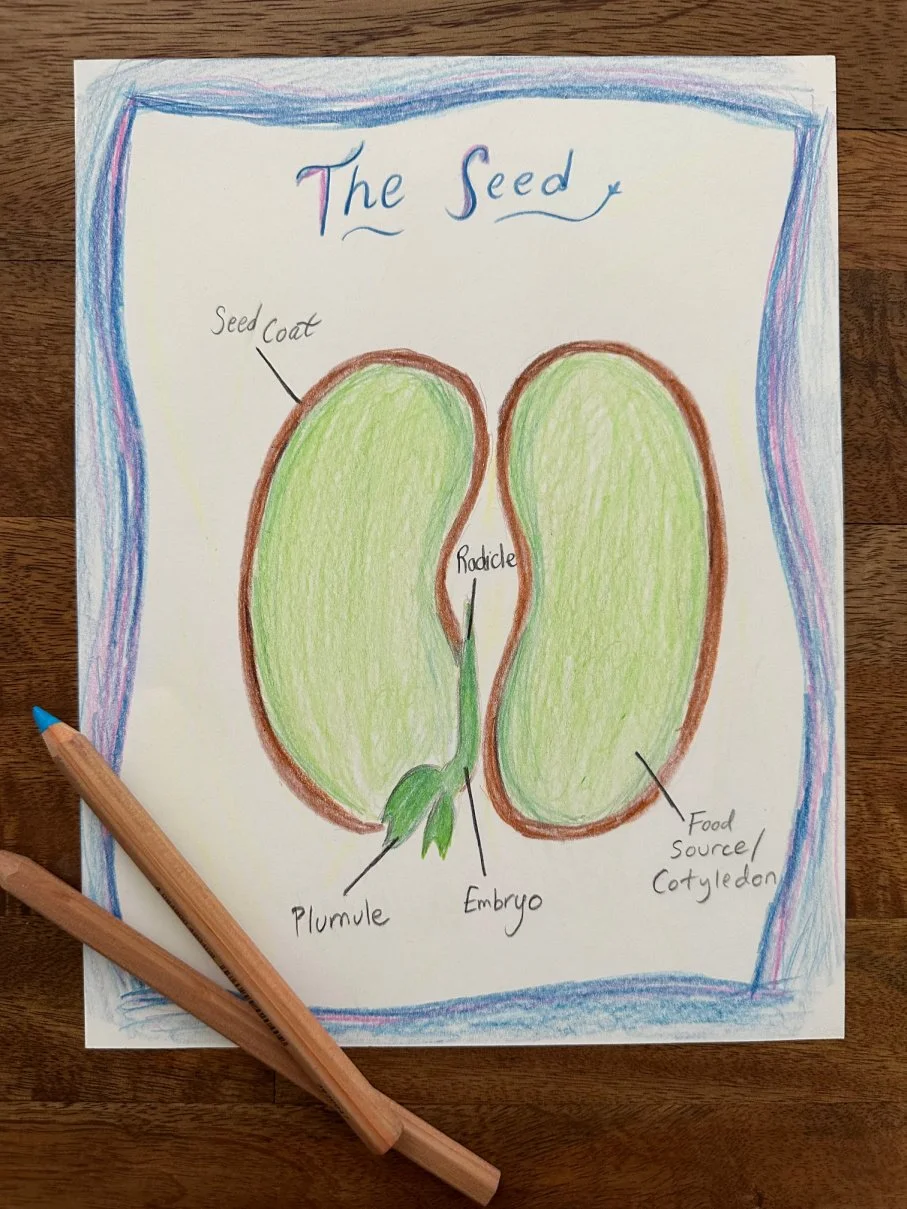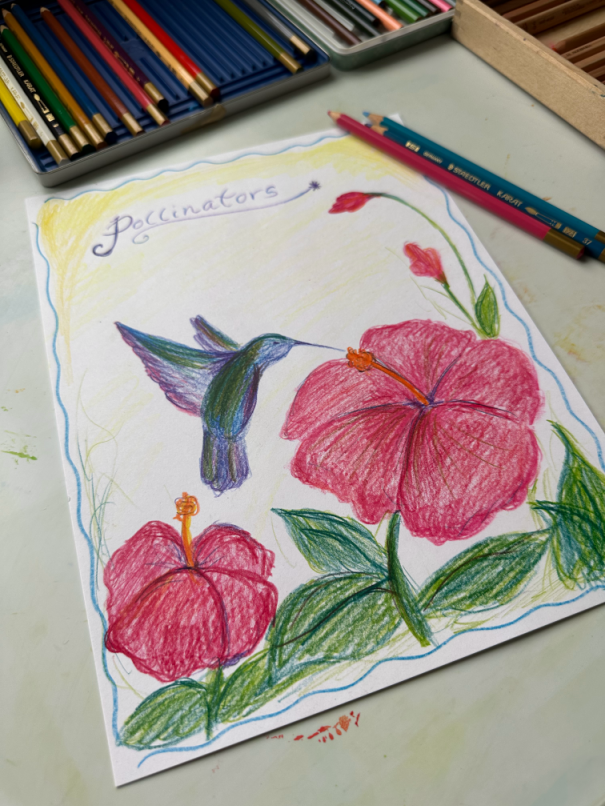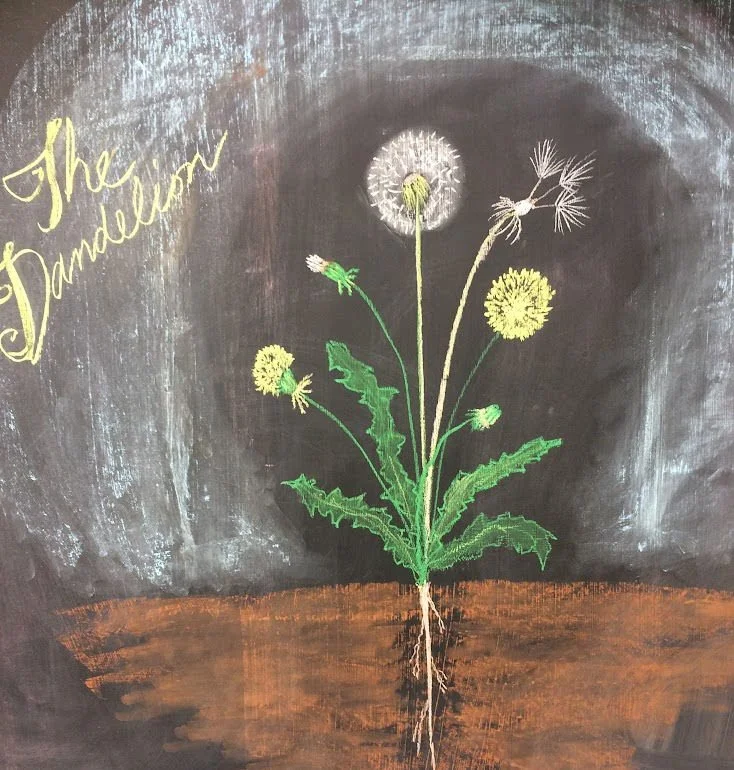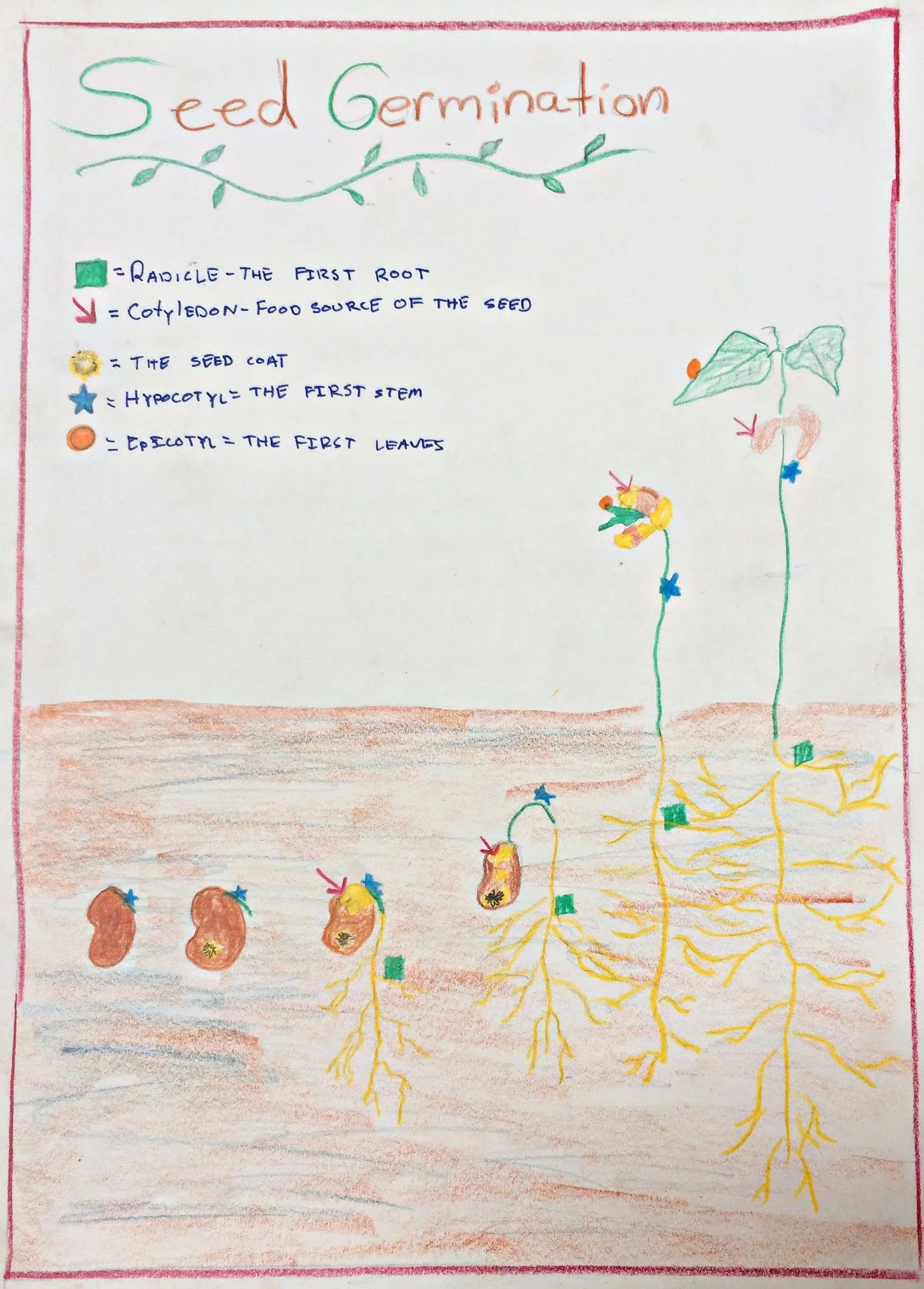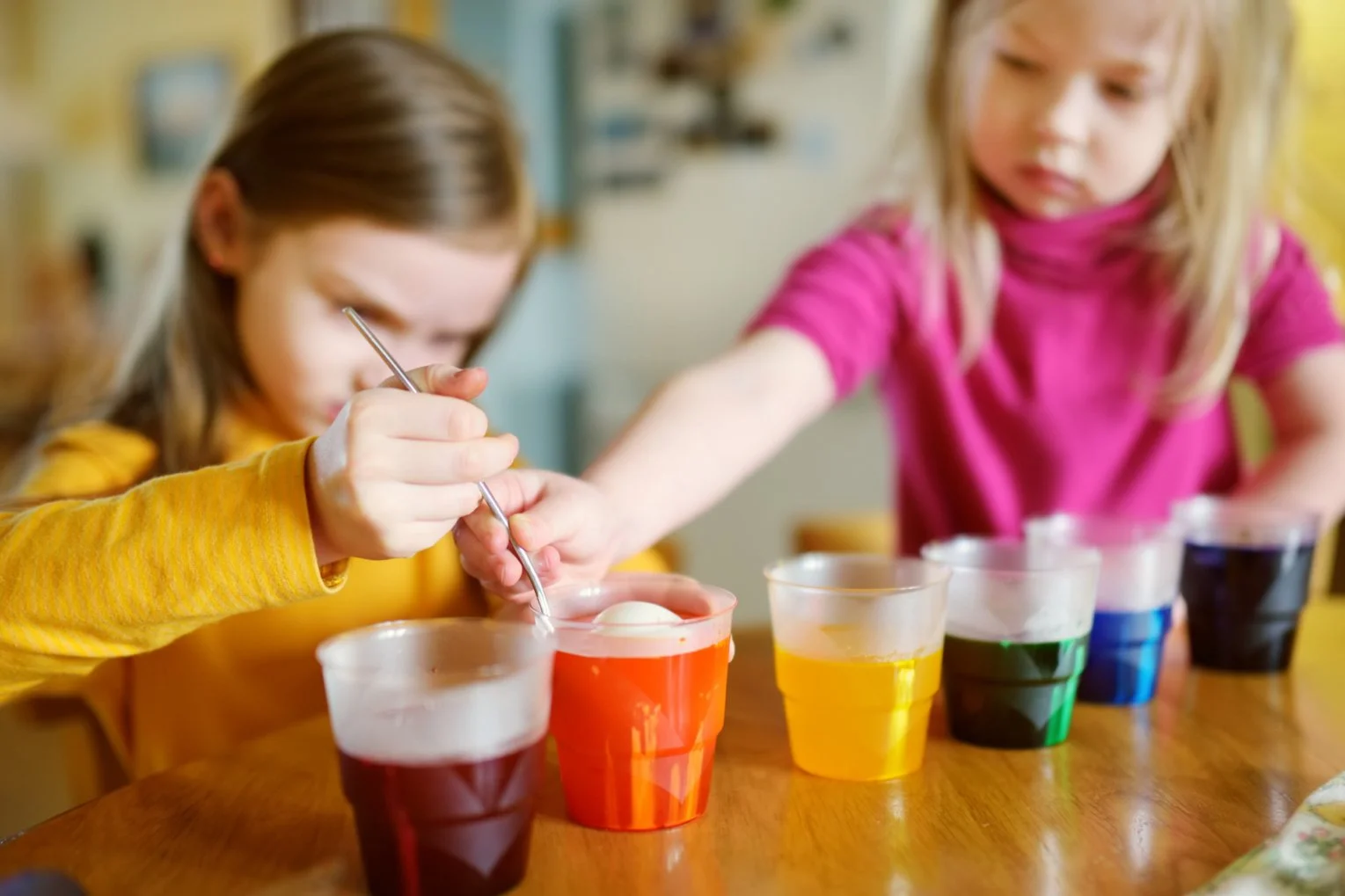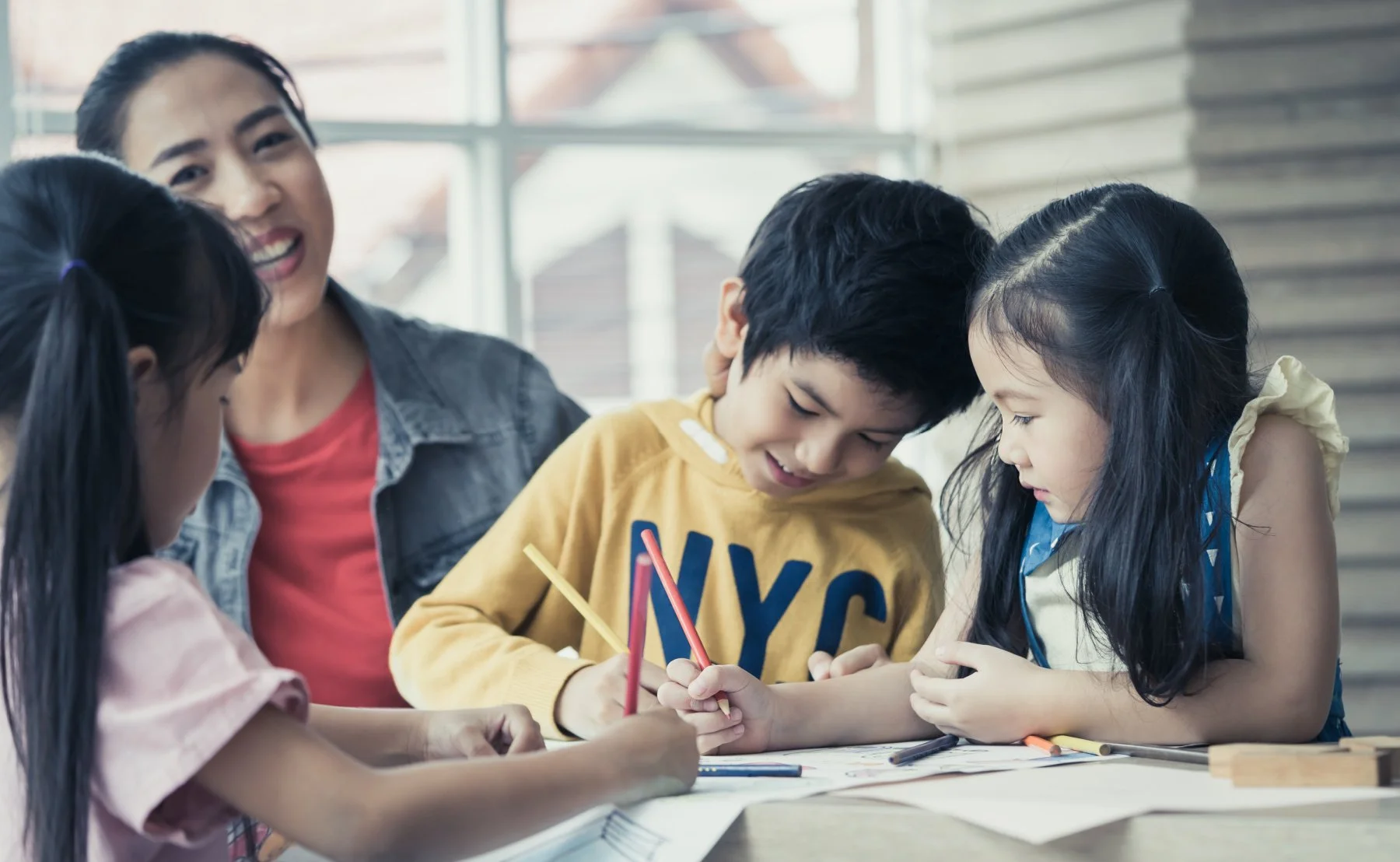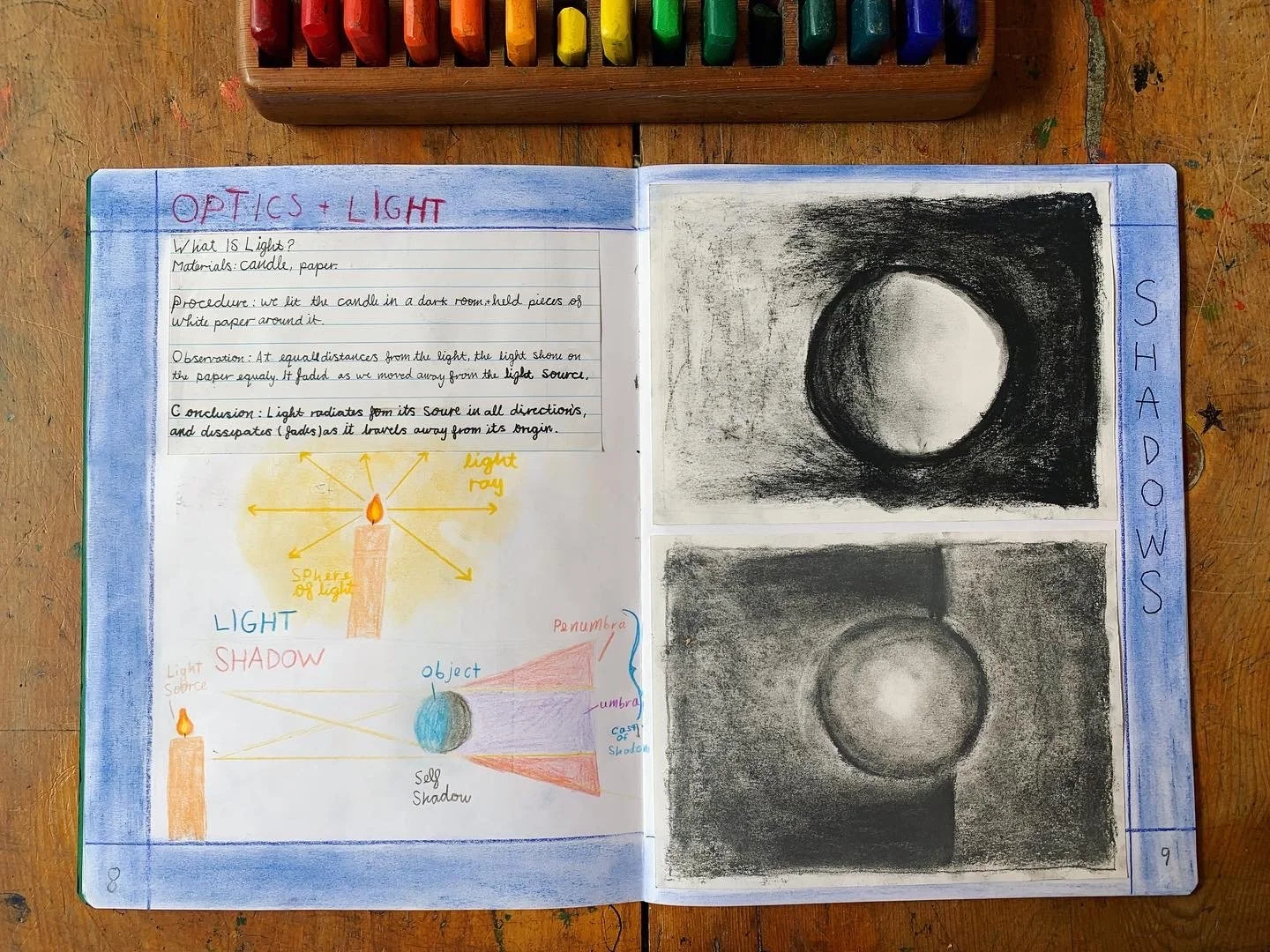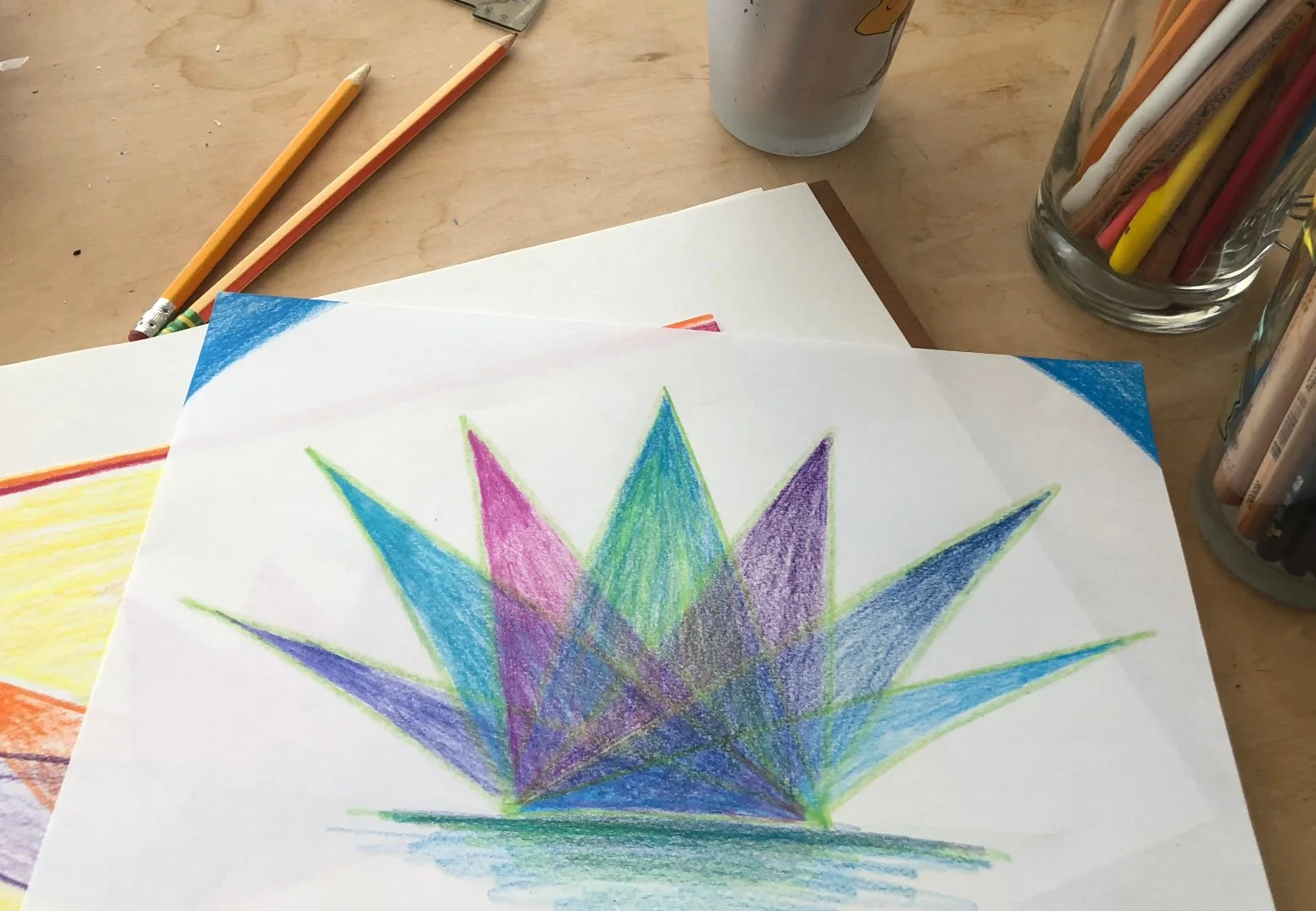
Waldorfish Blog
Is Waldorf Botany Academic as Well as Artistic?
Q: Is the Waldorf Botany curriculum academic?
(This post is part of a series in which we answer the most common questions we receive in our inbox re: homeschooling, Waldorf curriculum/pedagogy, and whatever else comes our way! Click here to read more from the series!)
A: A frequent misconception that we run into is that science and art cannot walk hand in hand. However, in Waldorf education, the two meld together to create a curriculum that is beautiful, deep, and academic!
Waldorf botany lessons include art, storytelling, and hands-on learning, all through the lens of scientific exploration.
Botany is usually taught in two separate blocks (to learn more about why, click here!) and each is imbued with scientific study in different ways.
A main lesson book page illustrating the inner structure of a seed- with plenty of color, of course!
The first block explores the “lower plants”- such as lichen, moss, ferns, and algae- and these plants are explored through the use of storytelling and artistic imagery. In this block, the educator is not focusing on the more complex aspects of these plants, but instead painting the picture of how these seemingly ‘simple’ plants live, thrive, and play important roles in the health of our planet.
In the first block, students explore the lower plants through imagery and imagination, while weaving in the science of the plants as well.
For example, the educator may tell the story of algae, while including that algae has no stem or real roots, cannot stand on its own, and provides much of the oxygen for all living things on earth. Through story, the child builds an understanding of algae as a living, beautiful, and essential plant.
The second Botany block, often taught later in the school year, is taught in similar ways to the first, though here, the educator brings in the method of phenomenology. (In short, phenomenology is the process of learning through doing and observation.)
The process of photosynthesis illustrated on a main lesson book page!
As the child has been growing throughout the year, by spring they are typically ready for a more complex curriculum, and ready to see plants in a new way!
Expanding upon the first block’s studies, the more complex plants are now explored: from seeds, to germination, photosynthesis to blossoms, and pollination to seed dispersal, the second block is a robust, more detailed study of the plant world.
The educator still uses art and storytelling (and will throughout eighth grade and beyond!) but they also bring in more opportunities for the student to observe, come to their own conclusions, and explore how plants grow and reproduce in a real way.
For example, learning about seeds will take a variety of forms. The educator may tell the story of the little seed waiting to sprout, and how it holds all the promise of what it will become within- even the smallest seed holds all of the potential to grow into a mighty Sequoia tree- it just needs a bit of help from air, water, and light!
The story of pollinators represented in one drawing- a perfect opportunity for students to combine science and art!
As well, the educator will bring in hands-on demonstrations, such as sprouting seeds on a windowsill, and dissecting a seed to see what’s inside.
What seeds sprout more quickly? Under what conditions? How do the sprouts differ from one type of seed to another? Can we observe the energy reserves of the seed, and what parts will sprout into the first leaf and root once it germinates?
Using this approach, the educator guides the children into seeing the plant in its entirety and its parts; how plants are not only beautiful, but how they function, and how the individual parts of a plant each have essential roles in making the plant whole.
Waldorf Botany curriculum is a wonderful example of how art, storytelling, and science can meld together to become a rich academic learning experience for the child!
Enjoy!
About the Authors
Robyn Beaufoy is Waldorfish’s CEO, and also a course instructor for Simple Season (coming soon!), Waldorf Art for Beginners, and Weekly Art Foundations. You’ll find her intuitive touches and influences throughout everything Waldorfish offers. Robyn has been in the world of education for over 25 years, with an MA in Education and a certification in Waldorf teaching - she also homeschooled both of her children for some of that time. In 2012 Robyn co-founded Waldorfish.com, creating it with the vision of making Waldorf inspired-art and pedagogy more accessible, joyful, and doable for homeschoolers all over the world.
Caitlin Amajor is Waldorfish’s course instructor for Geometry grades 5 & 6, and Botany, as well as our Administrative Assistant. From a young age, Caitlin has been immersed in Waldorf education, attending a Waldorf school from K-8. After receiving a BA in History, Caitlin gained her certification in Waldorf teaching, and spent seven years as a Waldorf class teacher in the upper grades. With a special fondness for watercolor painting and geometry, Caitlin loves bringing Waldorf education to her students all over the world, and seeing their own individuality and style bloom from the curriculum!
Waldorf Fifth Grade Botany: Growing with the Child
A fifth grade child is in a very interesting and important part of their development.
(Exciting news! Our Botany course is now open for enrollment! Click here to learn more!)
Students in this grade aren’t yet middle schoolers, and they also don’t feel as if they belong in the same space as a younger child anymore.
A fifth grader still has a sense of childlike wonder and imagination, but they are also beginning to gain interest in the more “realistic” world around them.
An educator’s chalk drawing of a dandelion, which is often studied in the first Botany block of the year.
I remember seeing my fifth graders out at recess near the beginning of the school year. They loved to play; skipping, laughing, playing “kitchen” with leaves and pine cones, searching for fairies in the garden.
At the end of the year, it was different. The students played more sports, especially with the older grade students , talked together in more private spaces, and complained about being “bored” (which always made me smile a little, what a teenager-y thing to say!)
This transition is bittersweet, but it is an important one.
I’ve found these two images to be helpful when thinking about a fifth grade child:
In one sense, they are coming down from the sky; the moon, the sun, stars and clouds, and finding their footing on earth. They are finding where they stand, and will work on finding a solid, confident footing throughout their pre-adolescent and teenage years (and beyond).
From trees, to plants and flowers, the Botany curriculum is vast and varied.
In a very real sense, the fifth grader is growing up, as if they were a seed breaking through the ground and beginning to sprout. In their younger years, a student is in the warm, safe care of their surroundings; they are being held, their potential still contained. But in this transitional year, they begin to sprout, grow, and stand on their own.
So, where does the curriculum come into this? (You knew we were going to tie this into the curriculum!) Among other subjects, we have one of the most important subjects of the year: Botany.
How does a seed grow to meet its fullest potential? What must it rely on to develop and grow? What happens when its needs aren’t met? What is its purpose, and how does it contribute to the health and well being of others in this world? What does it give, what does it take?
It may be hard to believe at first glance, but the botany curriculum really does ask and answer many (if not all) of these big questions in a subtle, yet impactful way, and the material grows with the child in a meaningful and purposeful way.
Let’s start at the beginning…
Traditionally, there are two botany blocks in the fifth grade, one in the fall and one in the spring (though of course, this varies from place to place).
Growth and change- a continuous theme through the Waldorf Botany blocks!
The first block begins in a soft, slow fashion. It is magical, and has a feel of mystery and wonder to it. Imagine a forest in a fairytale; one might find bright lichens clinging to the side of a shady tree, soft mosses where the princess rests, and algae that paints the running river with bright greens and blues. The teacher uses poetry, stories, and asks the students to use their senses as they study these special plants and fungi.
As the fifth grader is still in a more childlike and imaginative place, this first block meets them perfectly where they are in their development. Lichens and mosses rely on others, such as a sturdy tree trunk, to thrive and grow; just as the fifth grader is still more comfortable in the safe embrace of their imaginations and guidance of others.
The second botany block, usually done a few months later, shifts significantly in how the curriculum is presented, and what it includes. Trees and flowers are the main subjects studied, but in far more scientific detail than before.
Trees are now categorized into monocots and dicots by observing their different structures and characteristics; flowers are celebrated for their beauty, and also dissected carefully to identify their many parts, such as the petals, stigma, pistil, and more. The plants studied in this second block are far more independent in how they function, and have many individual features that make them unique and special in the vast plant world.
Botany main lesson book pages are an opportunity for students to show their own style, and illustrate what they’ve learned!
This is the developing fifth grader: ready to exercise more independence, beginning to discover themselves as individuals, and ready to enter a more realistic world.
As with all things in Waldorf education, the botany curriculum plays an important role in mirroring the development of the child. From its beginning, the botany blocks grow with the child. Starting with the plants that need a little more support and care from others, such as lichen clinging to tree branches, and ending with the independent, strong, and unique flower.
Simple to complex, dependence to more freedom, soft and magical to more formed and realistic. It’s all about growing up, and supporting the children to bloom into their best, most colorful and dynamic selves (botany pun intended!)
About the Authors
Robyn Beaufoy is Waldorfish’s CEO, and a course instructor for two of our courses - Waldorf Art for Beginners and Weekly Art Foundations. You’ll find her intuitive touches and influences throughout everything Waldorfish offers! Robyn has been in the world of education for almost 30 years, with an MA in Education and a certification in Waldorf teaching - she also homeschooled both of her children. In 2012 Robyn co-founded Waldorfish.com, creating it with the vision of making Waldorf inspired-art and pedagogy more accessible, joyful, and doable to homeschoolers all over the world.
Caitlin Amajor is Waldorfish’s course instructor for Geometry grades 5 & 6, and Botany, as well as our Administrative Assistant. From a young age, Caitlin has been immersed in Waldorf education, attending a Waldorf school from K-8. After receiving a BA in History, Caitlin gained her certification in Waldorf teaching, and spent seven years as a Waldorf class teacher in the upper grades. With a special fondness for watercolor painting and geometry, Caitlin loves bringing Waldorf education to her students all over the world, and seeing their own individuality and style bloom from the curriculum!
more on the blog…
Looking for something?
Welcome to Waldorfish! We started this adventure in 2012 out of a desire to make Waldorf training more accessible to class teachers in remote locations and to homeschooling families everywhere! Read more, click here.
WE WON! Our Weekly Art courses were voted “best interactive art program.” Learn more about the award, here.
A few of our most popular blog posts:

